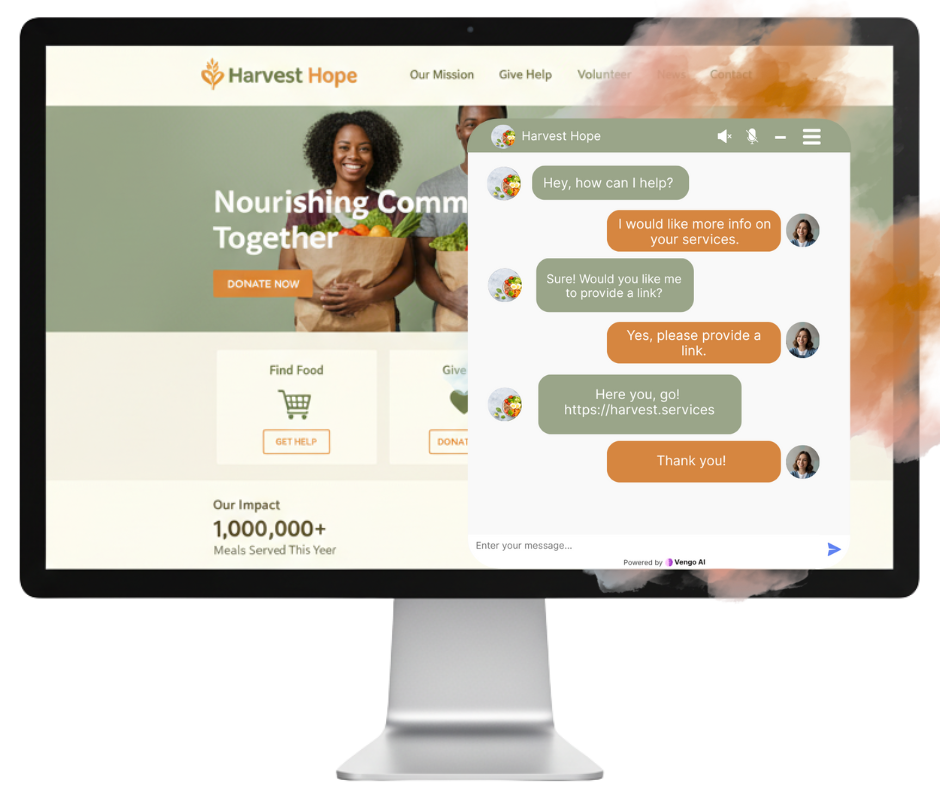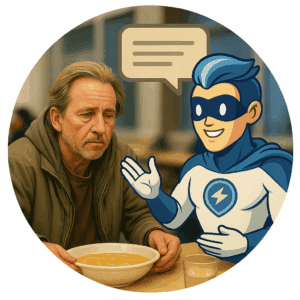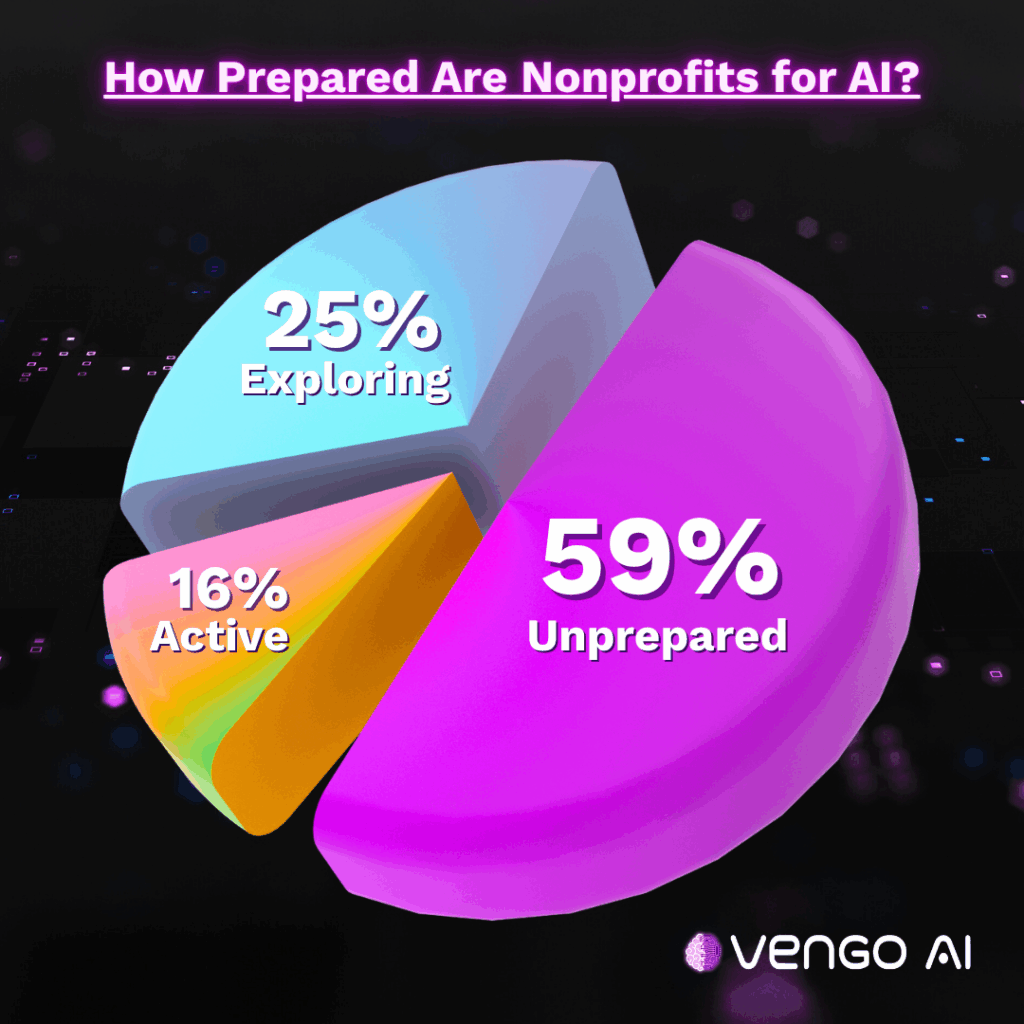The Human Cost of a Government Shutdown
When the government shuts down, it doesn’t just halt legislation. It halts lives. Federal workers miss paychecks. Families relying on SNAP and WIC benefits face delays or cuts. And in every city across the country, food banks and charities become the front line of support—straining to meet a surge in need while operating with fewer resources.
According to Reuters, more than 41 million Americans rely on SNAP benefits each month. During a shutdown, funding disruptions can leave millions uncertain about when or whether their benefits will arrive (Reuters, 2025). In places like California’s Emergency Food Bank of Stockton, supply shortfalls reach up to 30,000 pounds of food per week, even as they serve nearly 500 cars a day (KCRA News).
Local charities fill the gaps left behind—but when phone lines jam, websites crash, and overwhelmed volunteers can’t answer every question, people are left without answers at the worst possible time. That’s where AI can make the difference.

The Hidden Cost of Confusion
When systems fail, confusion spreads faster than hunger. People don’t know which food banks are open, what identification they need, or whether they qualify for emergency aid. Even those who do qualify may not have transportation or know where to go next.
A 2024 Council of Nonprofits report put it bluntly: “Demand goes up while funding goes down.” The mismatch between public need and nonprofit capacity creates a humanitarian bottleneck (Council of Nonprofits, 2024).
Food banks and community organizations already operate on razor-thin margins. When faced with shutdown-driven spikes in demand, every minute of delay matters.
How AI Bridges the Gap
Artificial intelligence can’t stock shelves, but it can remove barriers between citizens and the help they need. An AI Sales Agent (like those built on the Vengo AI platform) can guide visitors through high-stress moments—calmly, instantly, and around the clock.

On a food bank or charity website, an AI agent can:
- Answer questions in real time. “Where can I get food today?” “Is my ID valid?” “What are your hours?”
- Operate 24/7—unlike a call center or volunteer hotline.
- Provide multilingual support, reaching English learners and immigrant families often excluded from automated systems.
- Free up staff by handling common questions while human teams focus on logistics.
- Surface real-time data showing where inquiries surge and which communities need more help.
In short, AI transforms websites from static information boards into interactive guides. That’s not just a tech upgrade—it’s a resilience strategy.
When Compassion Meets Automation
AI’s real promise isn’t to replace human care. It’s to make compassion scalable.
When someone is hungry, they don’t need another web form or PDF—they need clear answers, fast. AI can offer dignity by reducing friction: no waiting on hold, no language barriers, no unanswered emails. It helps people move from crisis to clarity.
And for organizations on the front lines, these tools provide insight. Every chat becomes a data point—showing patterns in demand, urgency, and accessibility. Those insights can inform everything from volunteer scheduling to fundraising strategy.
As BlueWing reports, nonprofits leveraging AI have cut administrative burdens by up to 30%, freeing teams to focus on service, not spreadsheets (BlueWing, 2024).

The Urgency of Digital Readiness
Yet despite its promise, most nonprofits still aren’t ready.
A joint 2024 study by NTEN and Salesforce found that 59% of nonprofits have not yet implemented AI or lack a readiness plan. Another 25% are exploring pilot projects, while just 16% actively use AI in daily operations (NTEN & Salesforce, 2024; DonorSearch, 2024).
That means 84% of the sector is either still learning or lagging—at a time when digital responsiveness can literally change outcomes for families in need.
What We Can Do Next
For nonprofits and community programs, the next shutdown isn’t a question of if—it’s when. Preparation now can soften the next blow.
Here’s what can help:
- Add an AI Agent to your website. Let it handle frequently asked questions and update citizens instantly.
- Keep language accessible. The goal isn’t to sound technical—it’s to sound human.
- Train your AI with local context. Use accurate info about hours, ID requirements, and partner networks.
- Collaborate across agencies. Connect food banks, churches, and municipalities through shared data pipelines.
- Measure and adapt. Use conversation analytics to improve responsiveness and resource allocation.
Because when systems slow down, information must speed up.
📊 Nonprofit AI Readiness Breakdown

| Category | % of Nonprofits | Description |
| Unprepared or Not Yet Using AI | 59% | No current implementation or readiness plan |
| Exploring or Piloting AI Tools | 25% | Running small-scale or trial projects |
| Actively Using AI | 16% | Operational integration for communications or logistics |
Data sources: NTEN & Salesforce “AI for Nonprofits Report” (2024); DonorSearch (2024)
Closing Thought
When government halts, people shouldn’t lose hope—or clarity.
AI won’t solve food insecurity, but it can ensure no question goes unanswered in a time of uncertainty. It can turn confusion into coordination. It can carry compassion forward when everything else feels paused.
Because even when systems shut down, help should never go offline.
